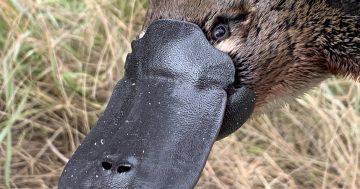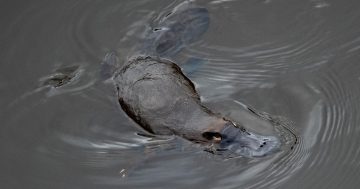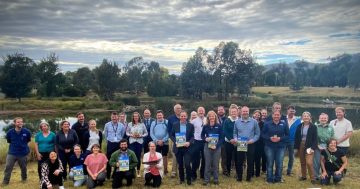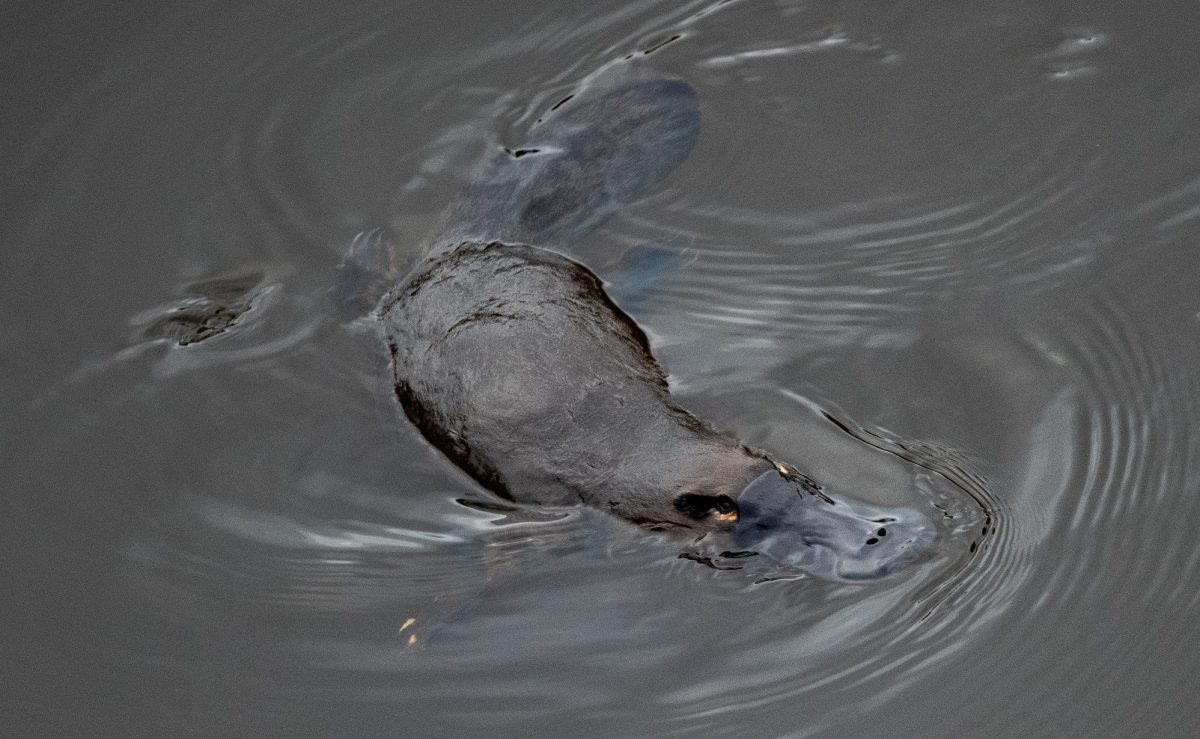
A platypus spotted at Queanbeyan River during Platypus Month last year. Photo: John Martin.
The ACT’s annual month dedicated to surveying the semiaquatic Australian mammal, the platypus, has returned for its ninth year.
Held every August, Platypus Month encourages people to become volunteers for the national citizen science program, Waterwatch, and monitor the platypuses at dusk and dawn.
Waterwatch regional facilitator Woo O’Reilly said the end of winter was the ideal time to observe the platypuses as, “They get ready for breeding during this time, so you tend to get a bit of a spike in sightings too”.
“Every year, we run 34 group surveys across eight sites in the region,” Woo said.
“Each survey needs about eight to 10 people to be spread out along the river for an hour, so that we can get a better sense of the platypus numbers in that given stretch of river.
“In the previous years, we’ve had over 300 volunteers join in across the region to help us observe them.”
At Point Hut Crossing at the Murrumbidgee River, Woo said, four platypuses had been found in last year’s surveys.
“It’s a really important site, and we want to learn more about it,” she said.
“Dawn and dusk are traditionally the more active times that you’re going to see the platypuses, so that’s when we hold our surveys at each site.”
In 2020, Woo said, 31 individual platypuses had been spotted across the eight observatory sites.
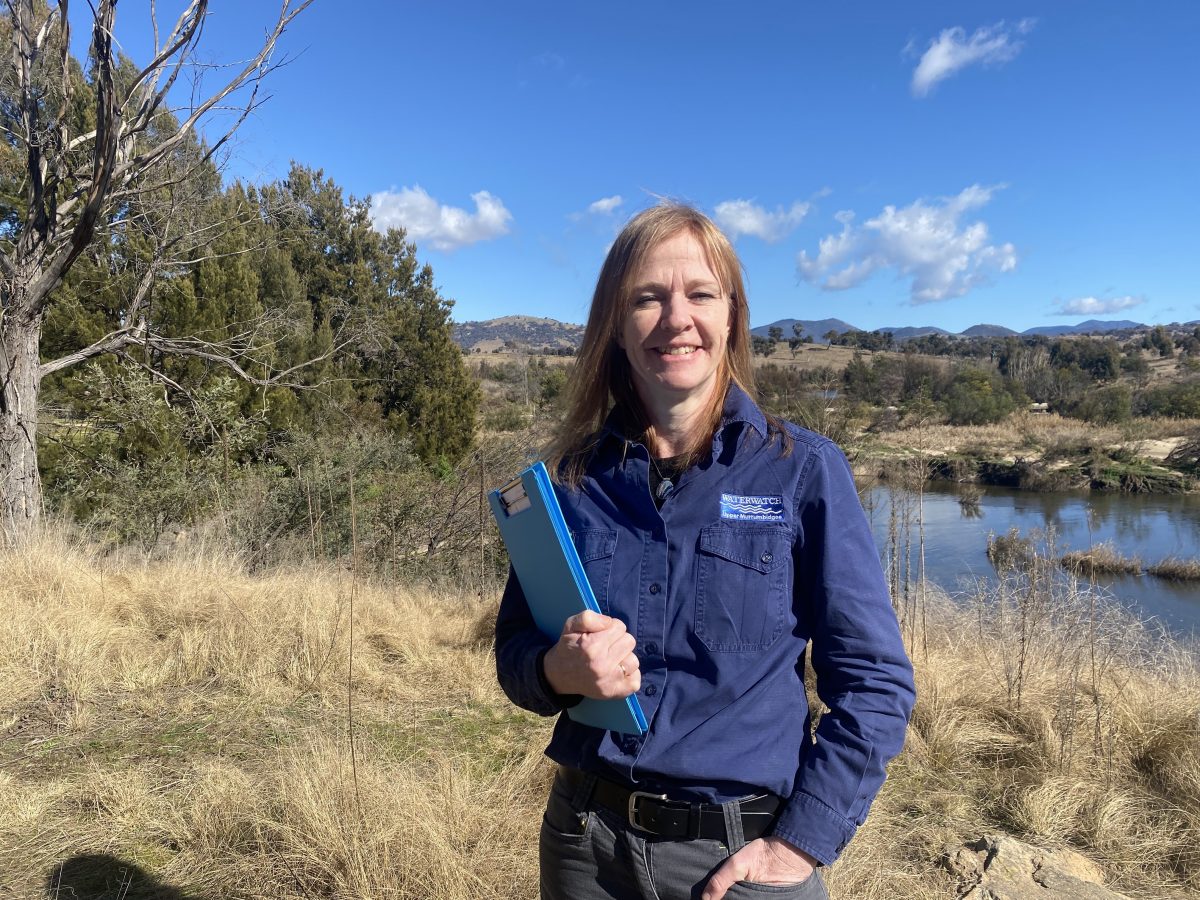
Woo O’Reilly has been involved with Waterwatch ACT for 10 years. Photo: Evelyn Karatzas.
“Queanbeyan River is a really good spot for platypus sightings – I think we see up to five at that site. There’s also the Tidbinbilla Nature Reserve at the Sanctuary, and the lower Molonglo River below Coppens Crossing Road, where Denman Prospects and Whitlam is all being built,” she said.
“That’s a really important site for us now, and we’ve only seen a couple along there, but it’s still a site of interest for us.
“Our best site is probably towards Bredbo. There’s a bush heritage reserve on the Murrumbidgee River and it’s a really intact piece of river, and where people have seen up to eight individuals in that one section.”
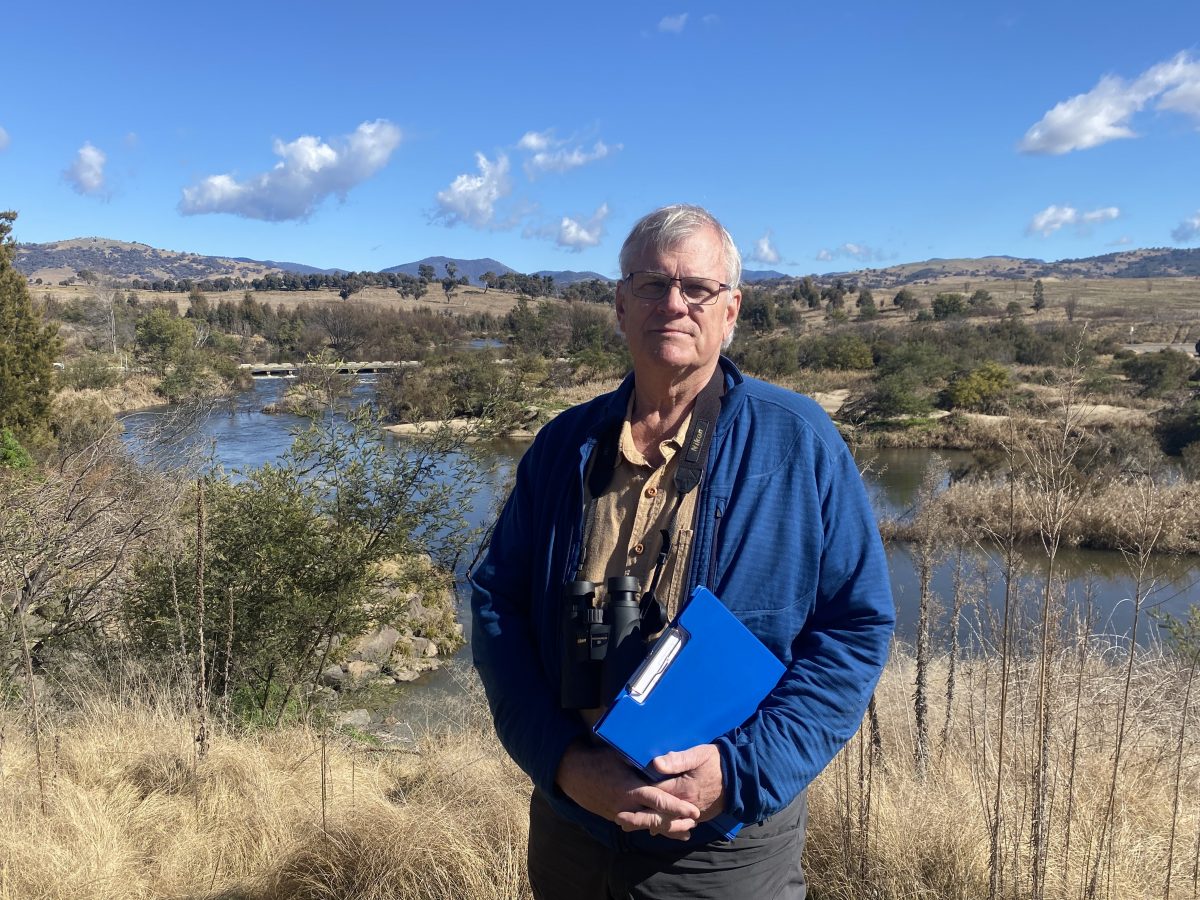
Ian Davies has been a Waterwatch volunteer for the past five years. Photo: Evelyn Karatzas.
One Waterwatch ACT volunteer, Ian Davies, has been involved with the platypus-observing program since 2017 and has since spotted four.
“I originally got involved as I had an interest in citizen science, and particularly with the platypus as it is a very unique Australian animal and I grew up in Western Australia and they don’t have them over there,” Ian said.
“I had never actually seen one in the wild until 2017. Now I’ve been taught how to identify a platypus and how to tell the difference between a platypus and rakali (water rat), and just how to get out and be patient on the river.
“It’s also made me more conscious of when my wife and I do go bushwalking and we’re in rivers, because I now know where to look for platypuses.”
Ian said volunteering involved an hour of observing and noting what you saw every 10 minutes.
He has been observing the platypuses at Point Hut Crossing since the start of the year, and will soon be joining volunteers on the lookout for others at the Jerrabomberra Wetlands.
Minister for Water Shane Rattenbury said now was the perfect time to join citizen scientists and ecologists to collect data to improve people’s understanding of the iconic Australian mammals.
“Late winter is the ideal time for spotting these much-loved mammals as they spend more time feeding and the males are out preparing for the breeding season,” Mr Rattenbury said.
“I encourage Canberrans to sign up to take part in these important surveys.”
Woo said Canberra was lucky to have several places where people could observe the platypuses.
“We’re the only people in this part of the world looking at platypuses, and so we want to make sure that their numbers don’t decline under our watch,” she said.
“These surveys give us really important data and I am so grateful for the help we receive from such a dedicated and supportive community.
“We are really looking forward to welcoming everyone back so that we can see how the platypus in our region have fared over the past two years.”
With no experience required, Woo said, you just needed “warm clothes and lots of enthusiasm”.
Find out how you can be involved in Platypus Month on the Waterwatch website.












